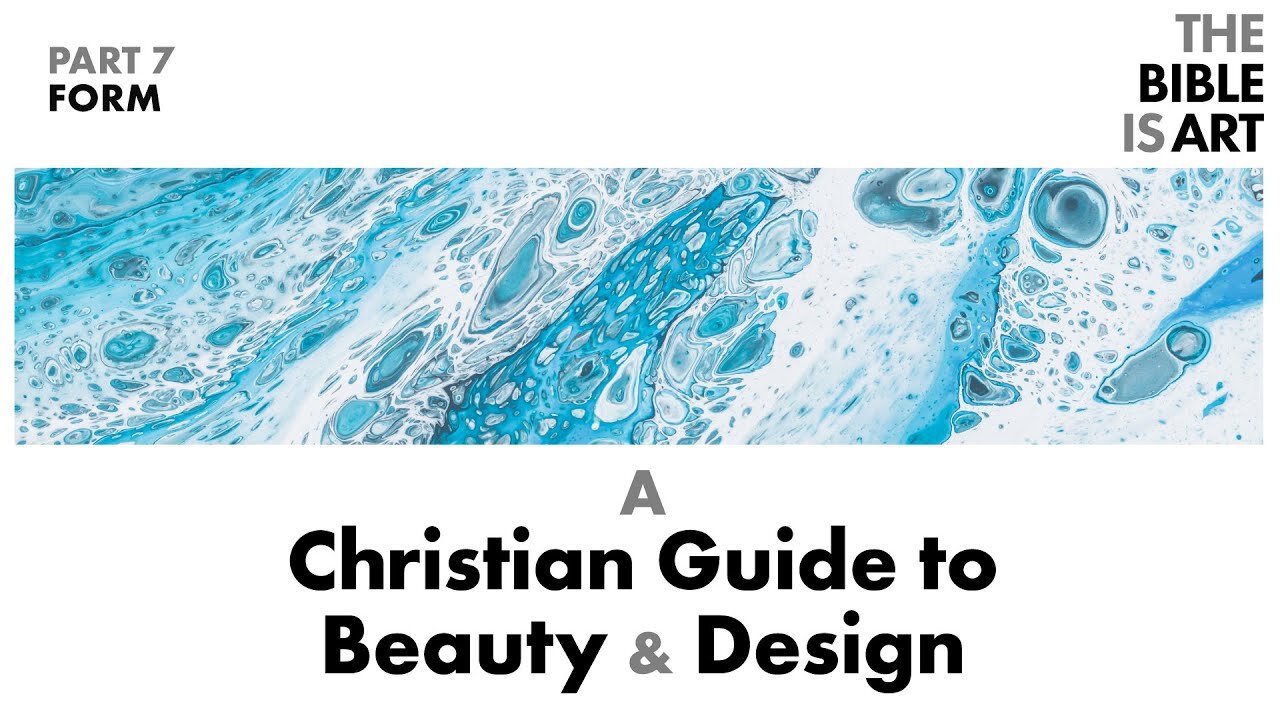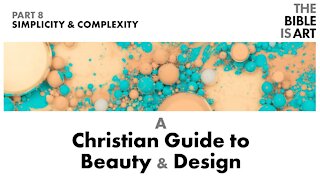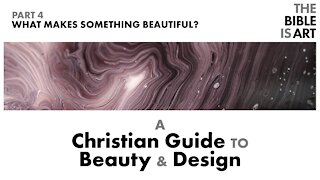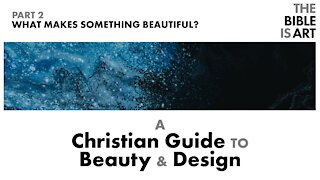Premium Only Content

Form | A Christian Guide to Beauty and Design | Part 7
In the 7th part of the series we look at the fourth fundamental aesthetic property :form. And we see their theological and philosophical connections.
Support the Channel: https://www.patreon.com/thebibleisart
Website: https://www.thebibleisart.com
Email: thisdivineart@gmail.com
Twitter: @johnbhiggins
| Transcription |
Welcome back to the Bible is Art where we are in a series on a Christian Guide to Beauty and Design. We are currently exploring the properties of a work of art or design that makes it beautiful. So far we have looked at unity, diversity, and hierarchy. And today, we’re exploring form.
For something to be beautiful and well designed it must have form or more precisely multiple forms. And a form is something with a structure or nature or essence, a meaningful and intelligible structure. So a circle is a form, a hand is a form, a car is a form. And there are higher and lower forms. Higher in aesthetic, moral, and ontological value. So a pencil is a lower form than a panda. And a muskrat is a lower form than a man. Why? Well a panda has greater ontological properties, he is alive and a pencil is not. Man is more beautiful than a muskrat. Notice, you may love a muskrat but you would never want to unite in marriage with a muskrat. We intrinsically understand the hierarchy of forms.
And this is the way God designed creation. He designed the world with a hierarchy of forms: lower forms and higher forms. And these forms go all the way down. The smallest form we know of is a quark. And quarks have a nature, a distinct essence. There are actually 6 types of quarks. And each of these six types have properties that make them what they are: electric charge, spin, mass, size. And the form of quarks make up higher forms: protons and neutrons. And the form of protons and neutrons combine to make up higher forms: a nucleus. And on and on, higher and higher. Like Legos God builds larger things from smaller things, more complex forms with more basic or simple forms.
And notice what the world is not. It is not just one thing, an undivided, undifferentiated thing. Nor is it a smooth gradient or gradation of things. As if every thing seamlessly, without seams or edges, glided into each other thing. No, the world is made up of different kinds of things, different and distinct forms. Now of course all of these things are related, and we will talk about that, the interpenetration of things. But at this point, we must appreciate that things have natures or structures and edges.
So let’s talk about these three aspects of form: it’s nature, it edge, and the hierarchy of forms.
Edges
The first thing you do when you’re creating a work is make an edge. That is, you create the boundary between your thing, your painting, your web page, and the outside world, inside and outside, this thing and not this thing. In architecture you have a parcel of land with a perimeter. With music you open up a new piece of sheet music, in design you open up a new illustrator or indesign file and there are edges to the pages, there are new documents.
Now you may be thinking what if I want my work to be connected to the outside world, the things around it? Yes, absolutely and that’s a whole other topic will talk about because that’s one of the important decisions that needs to be made is how closely this relates to the other things around it. It has to and it should. Let’s think about this for a second, buildings have windows and the number of windows and the size of windows will determine how much the exterior, the outside, interpenetrates into the inside and vice versa. If you have glass windows then you are allowing the outside to be seen, to enter into the life of the interior and the interior world to be seen from the exterior. If you add screens then you are allowing not only the visuals but also the odors to interpenetrate.
In a piece of graphic design you must decide how much the new poster or brochure will use the previous visual language of the brand or previous brochures and posters and how much will use visual idioms of that local or that time in history.
And the ability to determine both the quality and quantity of interpenetration between the exterior and interior is a great skill that must be developed and discipled. These are very important questions and we will address in later videos.
The important thing for now is that when you make a work of art, a form, or a form made up of many forms, there is an edge even if it is small there is an edge, there is a difference between this thing and that thing, this song and that song, this house in that house. Form creates edges.
Structure/Nature
Forms have a structure, an intelligible nature that accounts for their unity. For instance, the nature of a circle is where all the points of the shape are the same distance from the center.
A note in music denotes a sound that has a specific pitch.
-
 13:00
13:00
thebibleisart
3 years agoHierarchy | A Christian Guide to Beauty and Design | Part 6
66 -
 4:00
4:00
thebibleisart
3 years agoIntroduction | A Christian Guide to Beauty and Design | Part 1
114 -
 14:26
14:26
thebibleisart
3 years agoSimplicity and Complexity | A Christian Guide to Beauty and Design | Part 8
73 -
 7:14
7:14
thebibleisart
3 years agoThe Objectivity of Beauty | A Christian Guide to Beauty and Design | Part 2
165 -
 10:40
10:40
thebibleisart
3 years agoWhat Makes Something Beautiful? | A Christian Guide to Beauty and Design | Part 4
144 -
 9:24
9:24
thebibleisart
3 years agoWhat Makes Something Beautiful? | A Christian Guide to Beauty and Design | Part 3
102 -
 LIVE
LIVE
The White House
1 hour agoPresident Trump Participates in Invest America Roundtable
3,860 watching -
 LIVE
LIVE
Akademiks
5 hours agoBREAKING NEWS!!! 50 CENT RESPONDS TO HIS BM ON THE STAND AT DIDDY TRIAL. Day 18 of Diddy Trial. 5/30
1,982 watching -
 LIVE
LIVE
Stephen Gardner
32 minutes ago🚨Trump SCORES MASSIVE win despite RADICAL LEFT judges!
621 watching -
 2:00:41
2:00:41
Russell Brand
3 hours agoLA BURNS! Trump Sends In National Guard Amid CIVIL WAR Threat - SF593
110K50